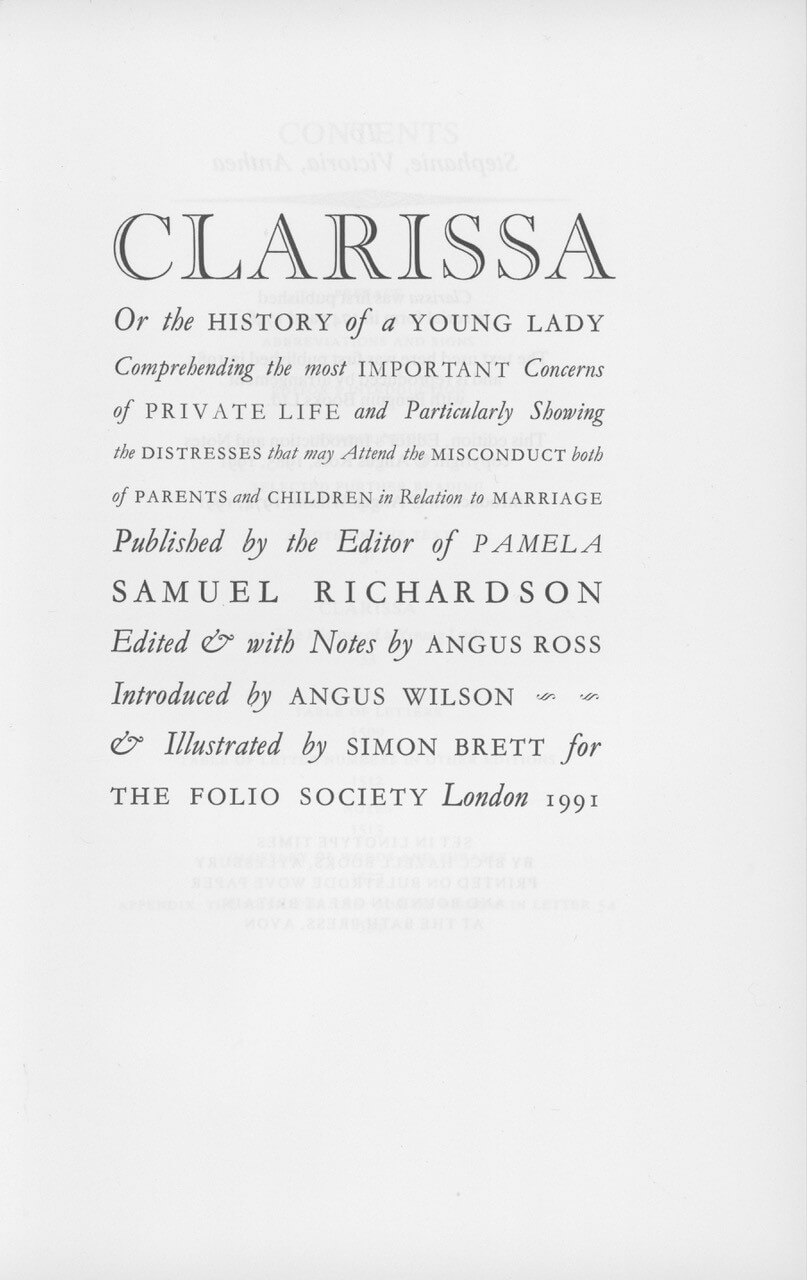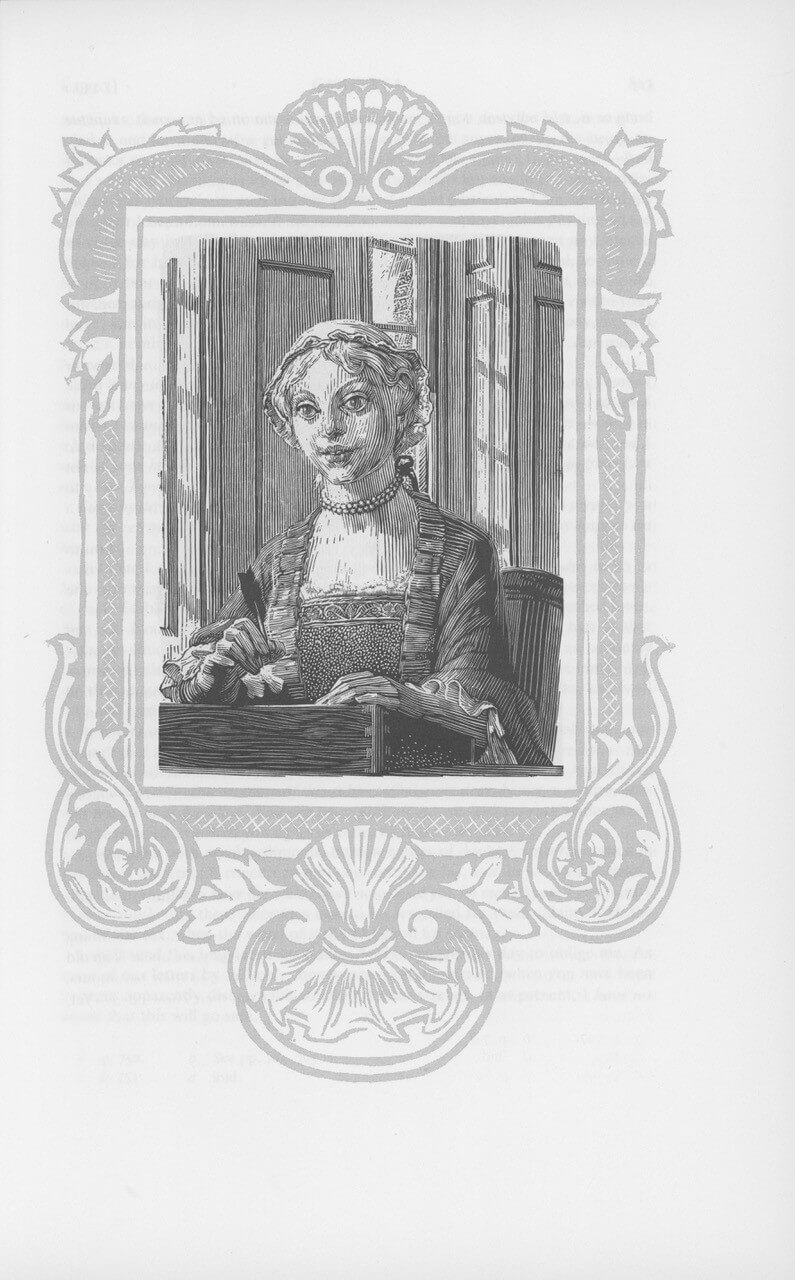I spent much of a dull but dry day finishing my second reading of

prompted by the ‘Richardson’s Novels’ essay in Leslie Stephen’s ‘Hours in a Library’, in which he praises this as the best of the author’s works.
Originally published in serial form during 1747-48, then in eight bound volumes, The Folio Society edition has been packed into two volumes comprising

1,500 tightly compressed pages containing well over a million words, of which this is an example.
If you are able to cast your mind back almost 300 years to a time without television soaps, with no internet, devoid of printers or photocopiers; when reading was done by candlelight and sedan chairs served as taxis; if you are satisfied with the leisurely journey offered by the lengthy prose which entertained those of that era you may well be entranced by this novel.
If you enjoy a fast pace of economical language leading to a quick conclusion; if you prefer watching your serials on streamed television freeing you from deferred gratification before you race ahead to the next, you probably wouldn’t last the course.
Yes, this is a long haul, and perhaps you would need to be an ex-marathon runner forced to slow down to take it on. The first time I read it I was commuting for an hour and a half each way on an intercity train.
Nevertheless this tragic tale presented in the form of exchanges of letters of varying lengths relaying differing perspectives on the same events is in fact compelling reading, if you don’t nod off. It is difficult to write without spoilers – as regular followers will know I try not to reveal the story, but perhaps I can point out that Richardson begins and ends with a duel, an example of his neatly tying up all the strands.
Each of the main protagonists details events and their inner thoughts to a trusted friend with whom they are not necessarily in agreement. Thus morals, honour, deception and devious devices are explored. The language, grammar, and sentence construction is not so different from today, but it is necessary to understand how the writers express themselves. Several copies of the correspondence were sometimes made and passed backwards and forwards to recipients. All this without modern reproductive devices.
A woman, once married, had no rights to property – any she owned became that of her husband, whom she was bound to obey. Although there is now no uniform marriage service in UK it is only 100 years since the female partner was no longer expected to “obey”. Jackie and I can’t quite remember, but we believe that when we first married in 1968, she vowed to obey me; not so in 2017.
It can be seen then, that one motive for marriage was the acquisition of assets and thus the potential enrichment of a family. This is one of Richardson’s themes, as is the domination of the husband.
Angus Wilson’s introduction to this edition is knowledgable and informative.
I am still limited in the number of illustrations I am able to include in posts, so I cannot feature every one of Simon Brett’s drawings.

This one ‘Meeting at Dusk’, appears opposite the sample page 166 above, which conveys the lady’s sensible mistrust.

‘Mr Solmes at Breakfast’ accurately conveys the oppressive atmosphere;

while ‘Miss Howe Writes a Letter’

has, on the reverse, an indication of the deception being employed.
Skilled as these illustrations are, they are rather too evocative of the text for me to include some of the more upsetting ones.
Late this afternoon Becky brought Flo and Ellie home and stayed the night.
We dined on another of Jackie’s shepherd’s pies with similar vegetables as yesterday with which she finished the Sauvignon Blanc, I drank more of the Douro, and the others abstained.



